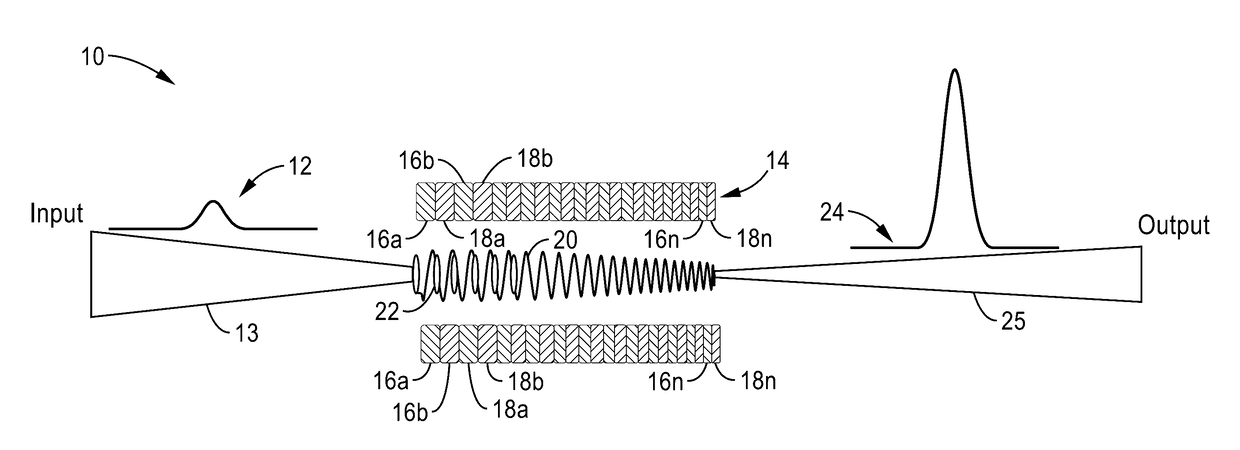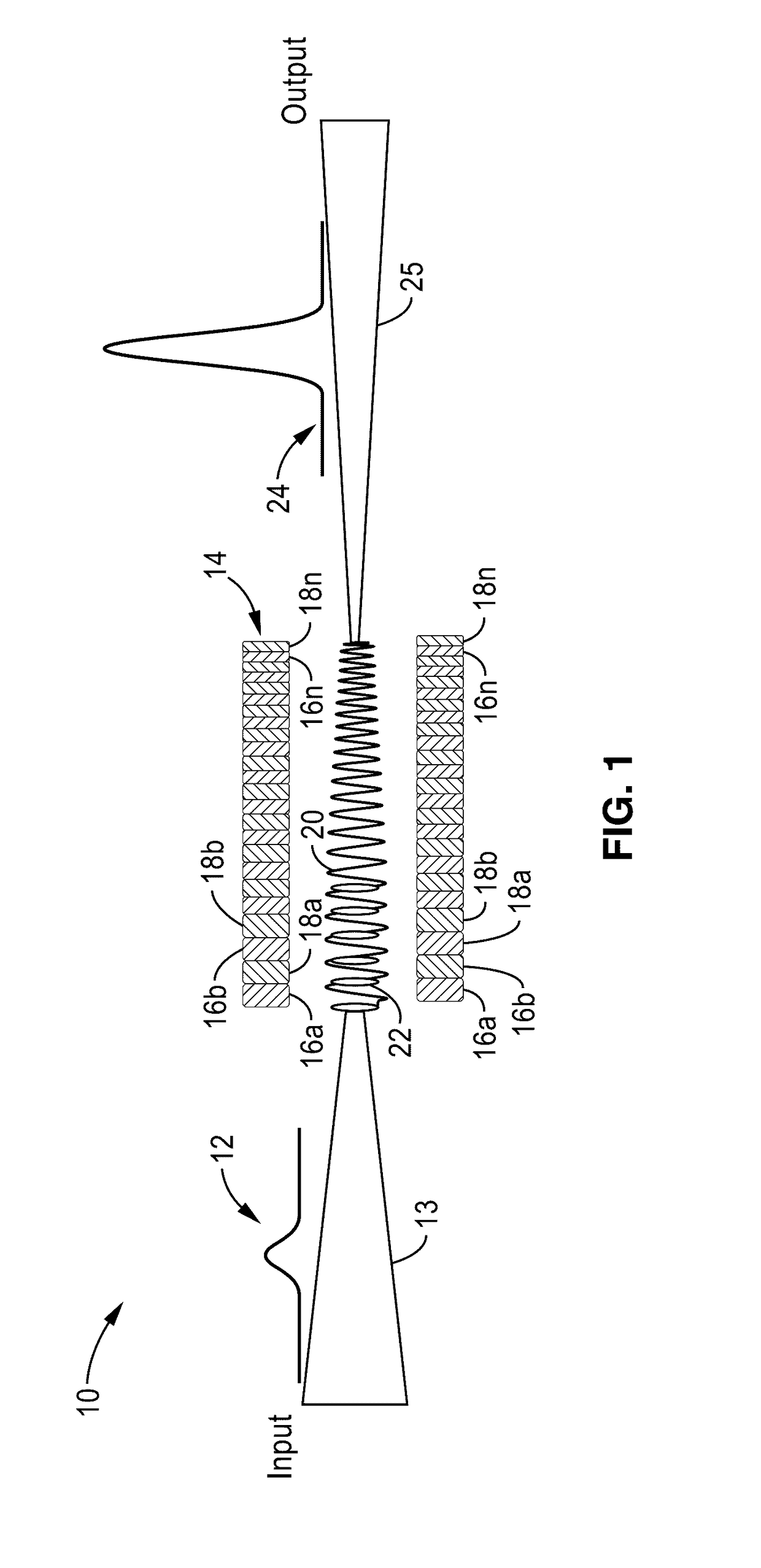Tapering enhanced stimulated superradiant amplification
a superradiant and enhanced technology, applied in the field of converting energy, can solve the problem that introducing seed intensities beyond the saturation level makes no practical sens
- Summary
- Abstract
- Description
- Claims
- Application Information
AI Technical Summary
Benefits of technology
Problems solved by technology
Method used
Image
Examples
embodiment 90
[0075]FIG. 4 illustrates another view of a TESSA embodiment 90 showing the strongly tapered undulator 94 with an e-beam 92, which is optionally pre-bunched, and input seed laser 93 which TESSA amplifies to a decelerated e-beam output 96 and optical output pulse 97. TESSA takes advantage of using a strong, beyond saturation, input field (stimulus) to enhance radiation emission and efficiency in the energy exchange of a relativistic beam and a radiation pulse in a magnetic undulator. The use of this beyond saturation input interoperating with the GITS determination of undulator configuration can provide amplification well beyond what was previously considered in the art, with amplification possible by a factor of up to more than one order of magnitude, and not merely a small percentage as in the prior art uses of an undulator. It uses for the first time a very high initial intensity to enable high capture, high gradient deceleration and high efficiency radiation emission.
[0076]It will...
embodiment 130
[0080]FIG. 6 illustrates an embodiment 130 of the genesis influenced tapering scheme (GITS) determining configurations of the strongly tapered undulator for TESSA. Parameters are input 132 with particle and radiation files optionally loaded. An FEL code 134 solves the Maxwell and Lorentz force equations determining the evolution of the electron beam distribution and the radiation in an undulator, with particle and radiation files being output 136. A loop commences in block 138 to execute so long as the position is less than undulator length. In this loop, properties of the particles and radiation are extracted 140, with tapering design 142, with output monitored 144, then FEL code is advanced one step 146, with particle and radiation files output 148 before returning to decision block 138 at the top of the loop.
[0081]4. Undulator Configuration Examples from GITS
[0082]FIG. 7A and FIG. 7B depict plots of TESSA efficiency and ideal tapering as determined by GITS. Resonant energy (GeV) ...
PUM
 Login to View More
Login to View More Abstract
Description
Claims
Application Information
 Login to View More
Login to View More - R&D
- Intellectual Property
- Life Sciences
- Materials
- Tech Scout
- Unparalleled Data Quality
- Higher Quality Content
- 60% Fewer Hallucinations
Browse by: Latest US Patents, China's latest patents, Technical Efficacy Thesaurus, Application Domain, Technology Topic, Popular Technical Reports.
© 2025 PatSnap. All rights reserved.Legal|Privacy policy|Modern Slavery Act Transparency Statement|Sitemap|About US| Contact US: help@patsnap.com



